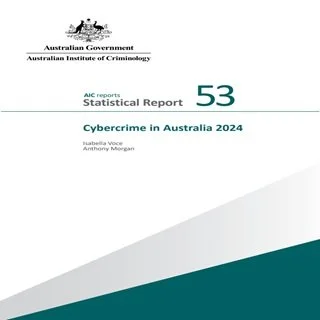By Isabella Voce Anthony Morgan
The Australian Institute of Criminology has released the Cybercrime in Australia 2024 Statistical Report. This latest report outlines the results from the second annual Australian Cybercrime Survey, which is the largest regular survey of the Australian community about different forms of cybercrime and provides important data on cybercrime victimisation, help-seeking and harms among Australian computer users.Nearly half of all respondents to the survey were a victim of at least one type of cybercrime in the 12 months prior to the survey. Twenty-seven percent of respondents had been a victim of online abuse and harassment, 20.6 percent had been a victim of malware, 21.9 percent had been a victim of identity crime and misuse, and 9.5 percent had been a victim of fraud and scams.The prevalence of online abuse and harassment, malware and fraud and scams victimisation was lower among 2024 respondents than in the previous survey. There was also a significant decrease in data breaches. Respondents were less likely in 2024 than in 2023 to say they were using various online safety strategies, and there was little change in the prevalence of high-risk online behaviours. And more victims were negatively impacted by cybercrime, particularly for social and health related harms. The report provides important evidence of the scale and impact of cybercrime on Australian computer users and where to target efforts to help build community resilience to cybercrime.
Statistical Report no. 53. Canberra: Australian Institute of Criminology. 2025. 118p










